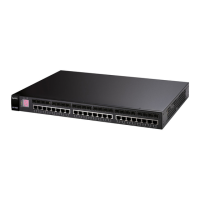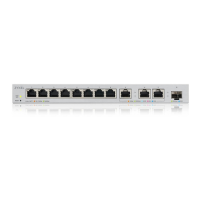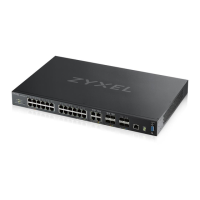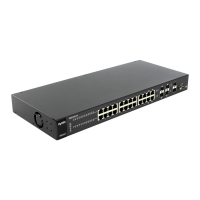Chapter 24 Multicast
XGS2210 Series User’s Guide
223
CHAPTER 24
Multicast
24.1 Multicast Overview
This chapter shows you how to configure various multicast features.
Traditionally, IP packets are transmitted in one of either two ways - Unicast (1 sender to 1 recipient) or
Broadcast (1 sender to everybody on the network). Multicast delivers IP packets to just a group of hosts
on the network.
IGMP (Internet Group Management Protocol) is a network-layer protocol used to establish membership
in a multicast group - it is not used to carry user data. Refer to RFC 1112, RFC 2236 and RFC 3376 for
information on IGMP versions 1, 2 and 3 respectively.
24.1.1 What You Can Do
• Use the Multicast Setup screen (Section 24.2 on page 227) to display the links to the configuration
screens where you can configure IPv4 or IPv6 multicast settings.
• Use the IPv4 Multicast Status screen (Section 24.3 on page 227) to view multicast group information.
• Use the IGMP Snooping screen (Section 24.3.1 on page 227) to enable IGMP snooping to forward
group multicast traffic only to ports that are members of that group.
• Use the IPv6 Multicast Status screen (Section 24.4 on page 234) to view multicast group information,
• Use the MLD Snooping-proxy screen (Section 24.4.1 on page 234) to enable the upstream port to
report group changes to a connected multicast router and forward MLD messages to other upstream
ports.
• Use the MVR screens (Section 24.5 on page 242) to create multicast VLANs and select the receiver
port(s) and a source port for each multicast VLAN.
24.1.2 What You Need to Know
Read on for concepts on Multicasting that can help you configure the screens in this chapter.
IP Multicast Addresses
In IPv4, a multicast address allows a device to send packets to a specific group of hosts (multicast
group) in a different subnetwork. A multicast IP address represents a traffic receiving group, not
individual receiving devices. IP addresses in the Class D range (224.0.0.0 to 239.255.255.255) are used for
IP multicasting. Certain IP multicast numbers are reserved by IANA for special purposes (see the IANA
website for more information).
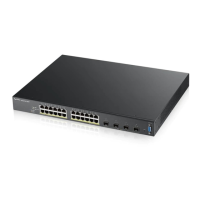
